Volume 151
Published on November 2025Volume title: Proceedings of CONF-CIAP 2026 Symposium: Applied Mathematics and Statistics
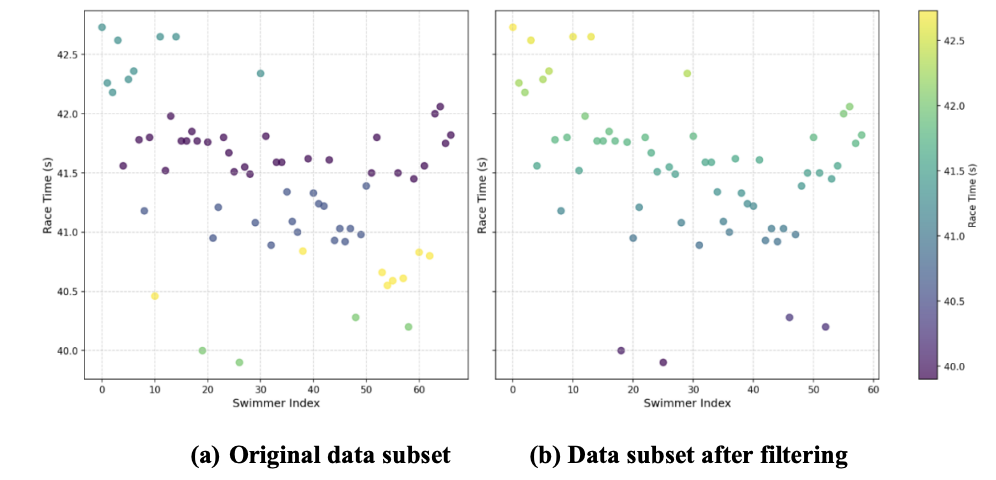
Sprint-freestyle performance prediction and interpretation require precise and actionable models for coaches and athletes. This study presents an interpretable machine learning model applied to lap-by-lap metrics from A-final 100-yard freestyle swims (n = 67). We construct a 12-dimensional feature vector from three technical metrics (mean stroke rate, cycle count, and breakout distance) across four laps, and construct both a regression task (smooth race time prediction) and a binary classification task (fast/slow, threshold at 41.4 s). Several algorithms were explored—Linear Regression, Random Forest, k-Nearest Neighbors (kNN), and Support Vector techniques—on multiple train/test splits and based on measures of R², MAPE, accuracy, and F1 score. Where regression R² values were low (best mean R² ≈ −0.042 for Random Forest), MAPE was nonetheless small (~0.011), with modest absolute error but little explained variance. Classification fared better: kNN recorded the best mean accuracy (≈0.727) and F1 (≈0.717). Most significantly, SHAP (Shapley Additive Explanations) identified Lap2_Stroke_Rate and Lap4_Breakout_Dist as two of the top features. Feature-selection tests showed that models that are trained on higher features perform with identical MAPE with significantly fewer inputs, towards useful, interpretable, and data-efficient ways for performance monitoring and coaching decisions.

 View pdf
View pdf


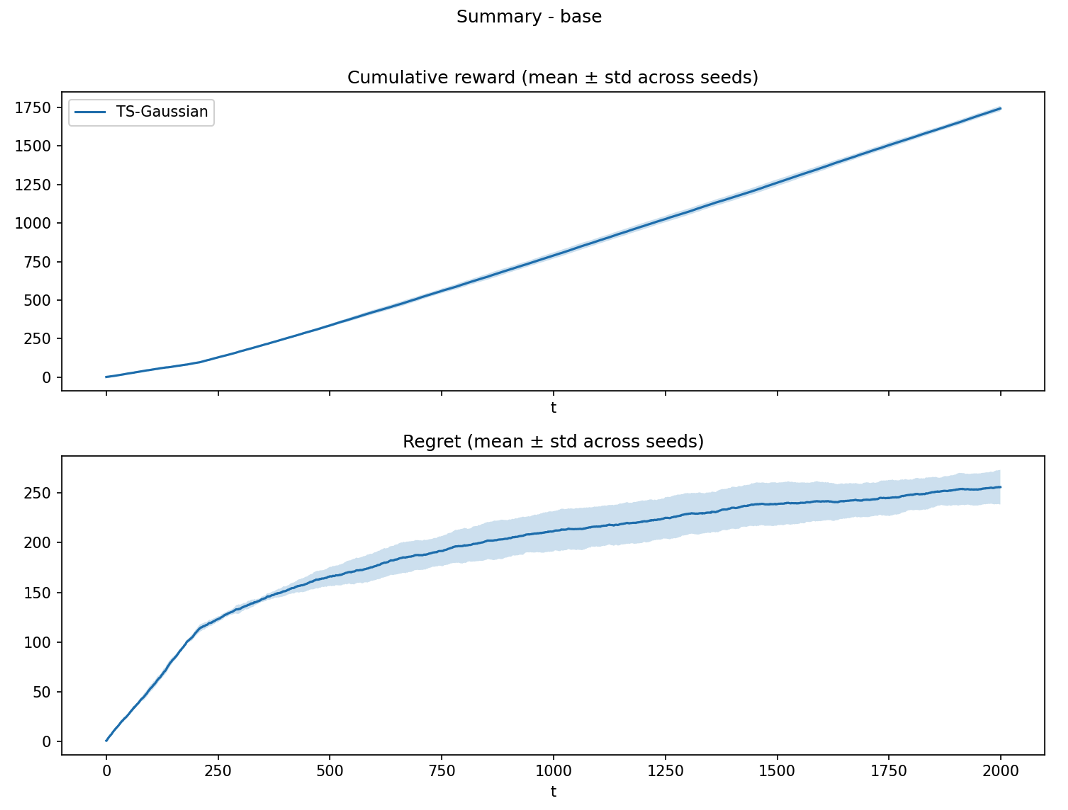
This study empirically compares three canonical Multi-Armed Bandit (MAB) algorithms—Explore-Then-Commit (ETC), fixed initial exploration, Upper Confidence Bound (UCB1), which is the optimism-driven uncertainty estimation, and Thompson Sampling (TS) with Bernoulli likelihood (TS-Bernoulli, posterior-sampling-based)—for short-video recommendation, aiming to solve the exploration-exploitation tradeoff in real-time feed systems. Experiments were conducted on the ShortVideo-Interactions (SVI-200K) dataset, a simulated corpus with ~1.2 million timestamped impressions and clicks from 240,000 user sessions over 30 days, covering ~18,000 unique items to mimic real platform dynamics. Evaluations used a fixed horizon (T=2000 timesteps) and restricted candidates to the top 200 items (K=200) per run, spanning three practical scenarios: stable base, information-scarce cold-start (new items with no prior data), and preference-drifting temporal-shift. Results, aggregated over three pseudo-random seeds (2025, 2026, 2027), show TS-Bernoulli consistently outperforms peers: it achieves the highest Click-Through Rate (CTR) (0.452 in base, 0.402 in cold-start, 0.428 in temporal-shift) and lowest cumulative regret (418, 518, 467 respectively). These findings confirm that TS-Bernoulli’s posterior sampling enables robust adaptation to short-video recommendation’s key challenges (information scarcity and non-stationarity), providing a practical algorithm choice for real-world platforms.

 View pdf
View pdf


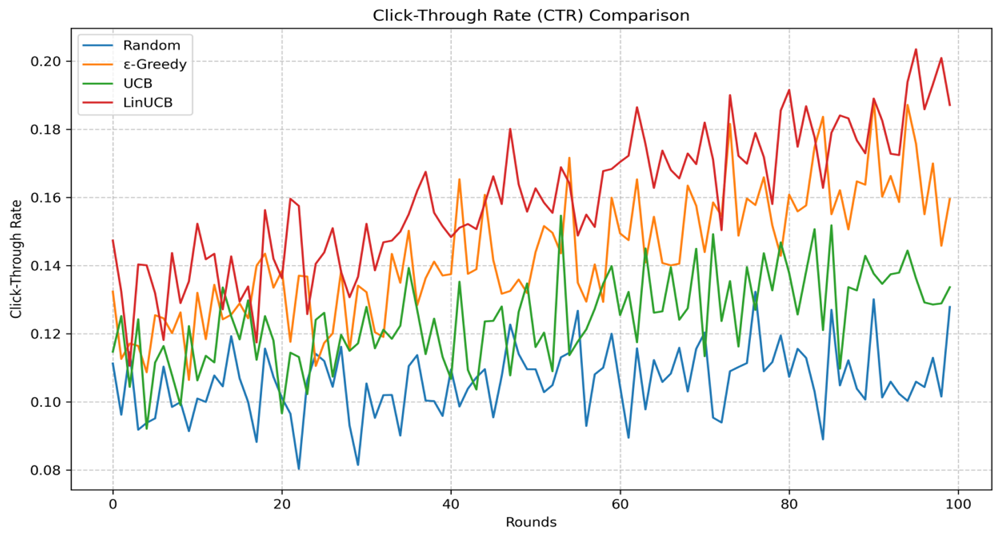
With the advent of the information explosion era, personalized news recommendation faces critical challenges including cold start problems, real-time changes in user preferences, and information filter bubbles. Traditional collaborative filtering methods rely heavily on historical data and struggle to adapt to the rapid update characteristics of news content. This paper proposes a news recommendation solution based on Multi-Armed Bandit (MAB) algorithms, addressing these challenges by balancing exploration and exploitation. The study implements four core algorithms: ε-greedy algorithm balances exploration and exploitation through probability mechanisms; Upper Confidence Bound (UCB) algorithm employs optimistic estimation using confidence upper bounds; Thompson sampling adopts probability adaptation based on Bayesian framework; and Contextual Linear Bandit (LinUCB) integrates user and news features for personalized recommendations. Experiments Youdaoplaceholder0 on the MIND large-scale news dataset (containing 160,000 news articles, 1 million users) and 15 million click interactions) demonstrate that contextual bandit algorithms outperform traditional methods in click-through rate, dwell time, and recommendation diversity. Thompson sampling shows outstanding performance in click-through rates, while LinUCB excels in convergence speed and recommendation diversity. The experiments confirm that MAB algorithms can effectively adapt to dynamic changes in user preferences, providing a viable solution for real-time news recommendation systems.

 View pdf
View pdf


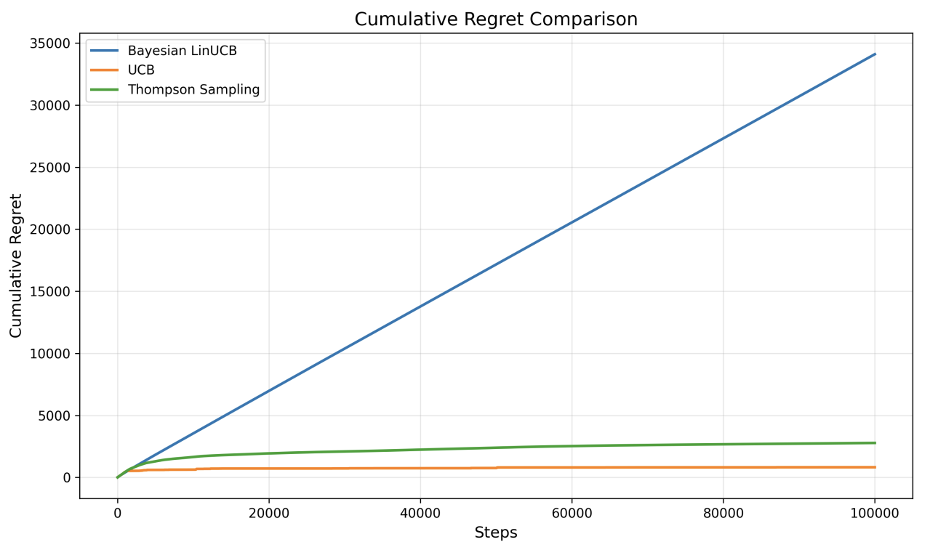
T Recommender systems have evolved into core business hubs, with approximately 35% of Amazon's revenue stemming from recommendation-guided behaviors. This study conducts a systematic comparative analysis of three multi-armed bandit algorithms—Bayesian Linear Upper Confidence Bound (Bayesian LinUCB), Upper Confidence Bound (UCB), and Thompson Sampling—using the MovieLens dataset. The research evaluates algorithm performance across three key dimensions: cumulative regret, optimal arm selection frequency, and regret rate. Experimental variables are strictly controlled with consistent parameters, including decision steps and data division ratios to eliminate confounding factors. Results reveal significant performance differences among the algorithms within the limited experimental steps on the MovieLens dataset. UCB demonstrates optimal performance with the lowest cumulative regret (817.93) and highest optimal arm selection frequency (0.9822), followed by Thompson Sampling with moderate performance (cumulative regret: 2776.36, selection frequency: 0.924). Bayesian LinUCB performs poorly across all metrics, showing the highest cumulative regret (34105.02), lowest selection frequency (0.1324), and a regret rate of approximately 1, indicating linear rather than sublinear growth. The sublinear growth characteristic exhibited by UCB and Thompson Sampling confirms their superior exploration-exploitation balance, while Bayesian LinUCB's linear growth pattern suggests inadequate adaptation to the MovieLens dataset scenario, highlighting the importance of algorithm-dataset compatibility in recommendation systems.

 View pdf
View pdf


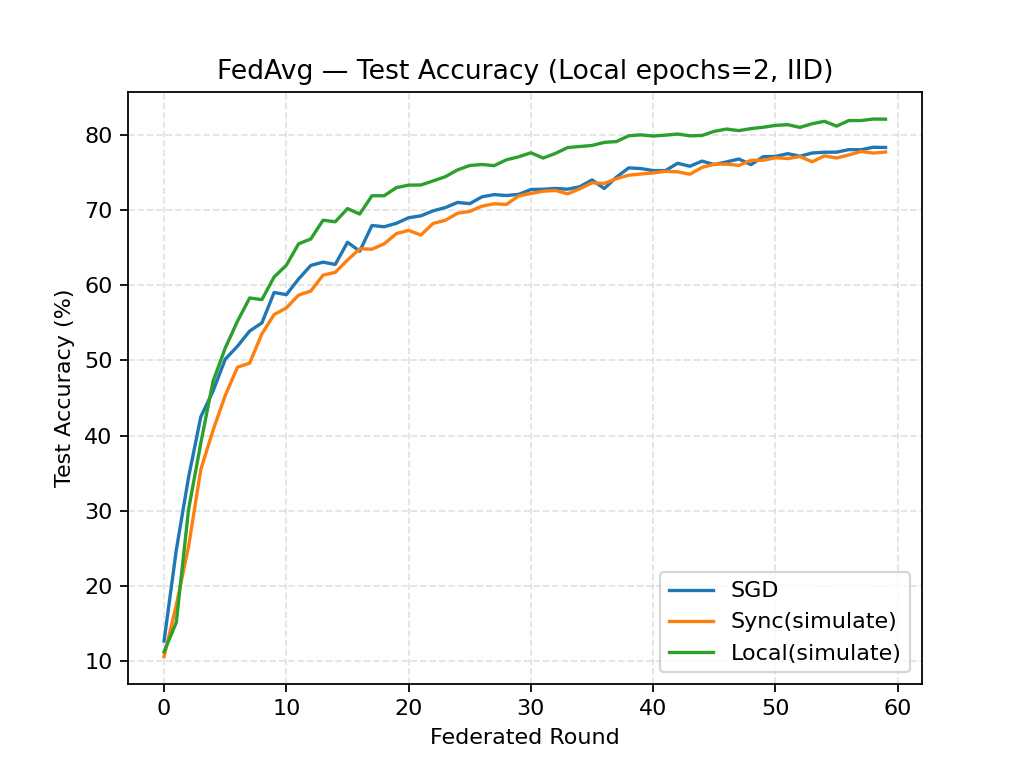
This work studies federated learning on CIFAR-10 using a ResNet-18 classifier and three local update modes: plain Stochastic Gradient Descent (SGD), simulated Synchronous updates (Sync), and simulated Local updates (Local). An IID split provides a baseline to verify training and logging. The main experiments use a non-IID split and vary two factors while keeping all other hyperparameters fixed: the number of local epochs (E, tested at 2, 4, and 8) and the client participation rate (p, tested at 0.1, 0.2, 0.5, and 1.0). After each round, test accuracy, test loss, and per-round communication time (download, upload, aggregation) are recorded. Results show a consistent accuracy ranking across settings, with Local > Sync > SGD, most evident at high participation. Increasing local epochs from 2 to 4 and 8 preserves or slightly improves final accuracy and lowers per-round communication; the most stable communication profile occurs at E=8, with E=4 also markedly lower than E=2. Raising (dparticipation from 0.1 to 1.0 improves final accuracy and reduces round-to-round variance; at full participation, communication ordering is clearest, where Local lowest and Sync highest. A practical operating point emerges for this task and hardware: moderate-to-high participation with eight local epochs balances accuracy and communication.

 View pdf
View pdf


Music creation through the use of artificial intelligence (AI) is an emerging and rapidly developing field. This paper presents a comprehensive review of the current state of AI music generation, covering the historical development of computer-assisted music production and AI-assisted music from early analog and digital tools to modern neural network architectures, and highlighting key developments such as MIDI, DAWs, plugins, and early algorithmic composition systems. It also examines symbolic and audio-based music representations, including MIDI, sheet music, waveforms, and spectrograms, and evaluates generative models such as GANs, LSTMs, Transformers, VAEs, and diffusion models, analyzing their various capabilities and limitations. Applications in areas such as content creation, gaming, healthcare, and marketing also demonstrate AI’s growing global impacts. This review also compares subjective, objective, and combined evaluation strategies used to assess new AI music models and addresses challenges and potential problematic areas in current studies and research. Finally, future research directions are discussed, including improved generative techniques, interdisciplinary integration, and real-time interactive systems, suggesting pathways for researchers to enhance creativity, expressiveness, and practical application in AI-assisted music production.

 View pdf
View pdf



